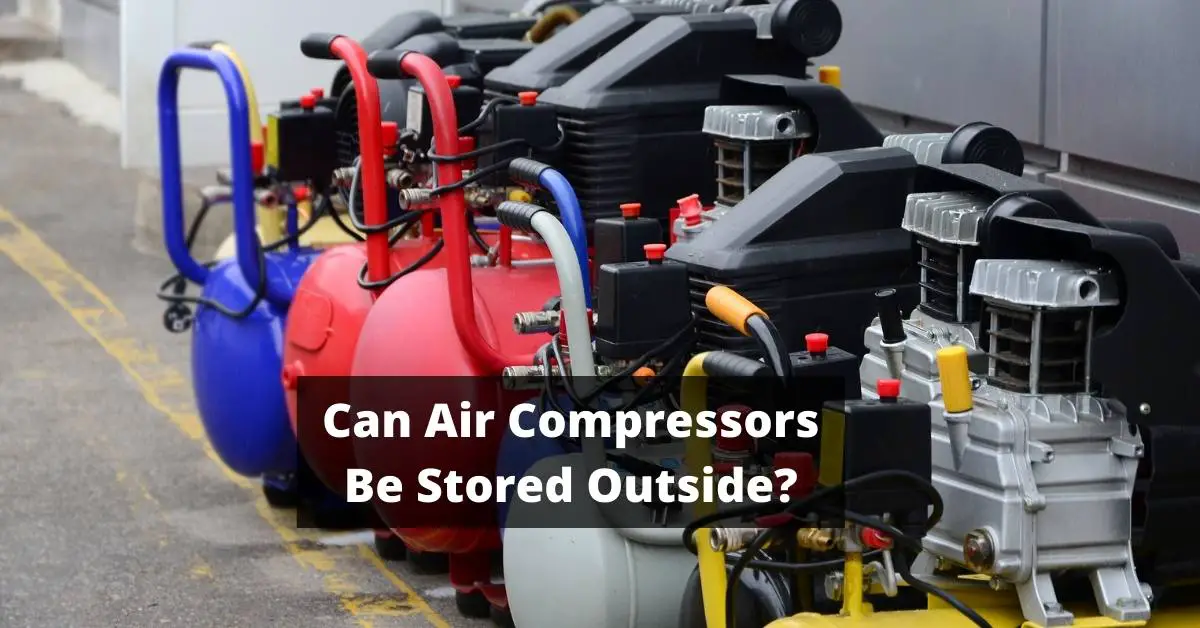As someone who has worked with air compressors for years, I know that repairing a hole in an air compressor tank can seem like a daunting task. However, with the right tools and techniques, it is possible to repair the tank and get your compressor up and running again.
In this article, I will guide you through the process of:
- Identifying the location and size of the hole
- Gathering the necessary tools and materials
- Preparing the tank for repair
- Repairing the hole itself
- Testing the repair to ensure it is effective
- Reassembling your air compressor properly
- Maintaining it afterwards
By following these steps carefully and methodically, you can save money on repairs by doing them yourself while also gaining more confidence in working with your air compressor overall.
Identify the Location and Size of the Hole
You might feel a sinking feeling in your stomach as you try to locate the spot where the pesky breach has caused all your air to leak out. This is why it’s important to take a good, close look at the entire surface of your compressor tank.
Check for any signs of rust or corrosion, which could indicate where the hole is located. Once you’ve identified the location, measure the size of the hole and determine if it can be repaired or if you need to replace the entire tank.
It’s crucial that you have an understanding of how air compressors work before attempting any repairs. Compressor tanks are designed to hold compressed air at high pressures, so any holes or leaks can cause serious safety hazards. Knowing how to identify and repair these issues correctly will help ensure safe operation of your machine.
After identifying where exactly the hole is located on your compressor tank, gather all necessary tools and materials before getting started on repairs. You’ll need items such as sandpaper, welding equipment, metal patches and sealant products – depending on what type of repair is needed for your specific situation.
With these ready-to-go materials by your side, let’s begin with repairing that pesky hole!
Gather the Necessary Tools and Materials
To successfully fix the damage, it’s important to have the right tools and materials on hand. For this repair, you’ll need a welder, flux core wire, a grinder with a cutting wheel and sanding disc, some steel mesh or patch material, and safety equipment such as gloves and eye protection. It’s also helpful to have an air compressor manual handy for reference.
Before starting the repair process, make sure to gather all of your tools and materials in one place. This will help you work more efficiently and ensure that you don’t forget anything. It’s also important to check that your tools are in good working condition before use. For instance, if your welding machine has any frayed cables or damaged parts, it could pose a danger during operation.
Once you have everything ready, it’s time to prepare the tank for repair. This involves draining any remaining air from the tank and cleaning the area around the hole thoroughly using a degreaser or solvent cleaner. By doing so, you’ll ensure that there is no debris or dirt left on the surface that could interfere with the welding process.
Prepare the Tank for Repair
Alright, now that I’ve got all my tools and materials ready, it’s time to prepare the tank for repair.
The first thing I need to do is drain the tank completely. This is important because any remaining pressure could cause an accident during the repair process.
Once the tank is drained, I’ll need to clean the area around the hole thoroughly to ensure a proper seal when applying the patch.
Drain the Tank
Emptying the container of any remaining liquids is crucial before moving on to the next step. To drain the tank, I first need to disconnect it from its power source and discharge all air pressure in the system.
Next, I locate the drain valve at the bottom of the tank and attach a hose to it. Before opening the valve, I make sure that there’s a suitable container positioned underneath to collect any liquid that may come out.
Once everything is set up properly, I open the valve and let gravity do its work. Depending on how much liquid was left in my compressor tank, this process can take anywhere from a few minutes to an hour or more.
Once all of the liquid has been drained, I close the valve and detach the hose before moving on to cleaning around the hole section.
Now that my compressor’s tank is empty and free of any potential hazards like oil or water, it’s time to move on to cleaning around where I’ll be making repairs.
Clean the Area Around the Hole
Now that the container is free of any liquids, it’s important to clean the surrounding area thoroughly to ensure proper adhesion of any patches or sealants.
Did you know that 85% of compressor tank failures are caused by rust and corrosion? Therefore, it’s crucial to use a wire brush or sandpaper to remove any rust or debris around the hole. Make sure there isn’t any paint left on the metal surface as well, as it can act as a barrier for the patching material.
After removing all the rust and debris, wipe down the area with a clean cloth and rubbing alcohol. This will help eliminate any remaining dust or oil residue on the metal surface and promote better adhesion for your patching material.
It’s vital to have a clean working environment without any dust particles when applying patching materials over holes in air compressor tanks. Now that we’ve cleaned up our work area, let’s move onto repairing the hole in our air compressor tank.
Repair the Hole
To fix the issue, we’ll need to patch up that gap so no more air can escape from the container. First, I recommend cleaning the area around the hole with a wire brush or sandpaper to ensure that there’s no debris left behind.
Next, you’ll want to apply a two-part epoxy putty over the damaged area and smooth it out using a putty knife. This type of putty is specially designed for repairing metal surfaces and can withstand high pressure.
Once the epoxy has cured according to its instructions, you should sand down any rough edges until they’re flush with the surrounding metal surface. You may also consider painting over the repaired area with a rust inhibitor paint to help prevent further damage in the future.
It’s important to note that if the hole is particularly large or deep, you may need to seek professional assistance or even replace your compressor tank altogether.
After completing the repair process, it’s crucial to test your work before using your compressor again. Turn on your device and listen for any hissing sounds or leaks around the repaired area. If everything seems fine, let it run for several minutes while monitoring its behavior closely.
Only when you’re confident that your repair job was successful should you resume normal use of your air compressor tank.
Test the Repair
You’re ready to fire up your machine and give it a spin, so let’s see if everything is working smoothly after the recent fix. Before starting the air compressor, I recommend checking for any leaks or hissing sounds around the area of repair. If there aren’t any signs of leakage, turn on the compressor and listen for any unusual noises or vibrations.
To test the repair thoroughly, you can attach an air tool to the hose and use it at various levels of pressure. Observe how the compressor operates under different loads and make sure that it delivers consistent pressure without dropping or fluctuating unexpectedly. You may also want to check if all safety features are functioning correctly before using the air compressor regularly.
If everything seems to be in order, congratulations! You’ve successfully repaired your air compressor tank and saved yourself some money in the process. The next step is to reassemble your compressor carefully by following manufacturer instructions or consulting with an expert if necessary. Remember that proper maintenance will ensure that your machine runs efficiently for years to come, so be sure to keep up with regular inspections and repairs as needed.
Reassemble the Air Compressor
Okay, it’s time to reassemble the air compressor. First things first, I need to reattach all the components that were removed during the repair process. This includes the pressure switch, regulator, and any other parts that were taken off.
Once everything is securely in place, I can refill the tank with oil and test out my handiwork.
Reattach Components
Now it’s time to put everything back together so that you can get your compressor up and running again. The first thing you should do is reattach the components you removed earlier. This includes the pressure switch, safety valve, and regulator. Be sure to tighten all connections and use Teflon tape on any threaded fittings to prevent leaks.
Next, reconnect any electrical wires or hoses that were disconnected during the disassembly process. Double-check that everything is properly connected before moving on to the next step of refilling the tank with oil and air. Remember, it’s important not to rush this process as one mistake could cause significant damage to your air compressor.
After all connections have been double-checked, move on to refilling the tank with oil and air so that your compressor is ready for use once again!
Refill the Tank
It’s time to refill my empty tank with oil and pressurized air, so that my newly reassembled machine can be put back into action. First, I need to make sure that the compressor is turned off and unplugged from any power source before starting this step.
Then, I remove the filler cap on top of the tank and pour in the recommended amount of compressor oil. It’s important not to overfill as it could cause damage to the machine.
Next, I connect a hose from an external air source to the valve at the bottom of the tank. Slowly turn on the external air supply while monitoring pressure gauge until it reaches recommended levels for your particular model.
Once full pressure has been attained, turn off external air supply and disconnect hose from valve at bottom of tank.
With these steps completed, you’re ready to move onto maintaining your air compressor properly – ensuring that it continues running smoothly for years to come!
Maintain Your Air Compressor
To keep your air compressor running smoothly, you gotta give it some TLC every now and then – a little maintenance goes a long way! One of the most important things you can do to maintain your air compressor is to regularly change its oil. The oil in your compressor lubricates its moving parts, which helps reduce wear and tear on those parts over time. When the oil breaks down or becomes contaminated with dust and debris, it can no longer perform this function effectively.
Another key maintenance task for your air compressor is to clean or replace its air filter regularly. The air filter prevents dust and other particles from entering the compressor’s internal components, where they can cause damage over time. If you neglect this task, you may notice reduced performance from your compressor as it struggles to draw in enough clean air to operate effectively.
Finally, make sure to inspect all of the hoses and connections on your air compressor regularly for signs of wear or damage. Leaks in these areas can cause significant loss of pressure and reduce your compressor’s overall efficiency. By catching these issues early on and addressing them promptly, you can help prevent more serious problems down the line that could require costly repairs or even replacement of the entire unit.
With just a little attention paid to regular maintenance tasks like these, you’ll be able to enjoy years of reliable operation from your trusty air compressor!
Conclusion
In conclusion, repairing a hole in an air compressor tank isn’t as daunting as it may seem. With the right tools and materials, anyone can do it. However, it’s important to remember that safety should always come first when dealing with compressed air systems.
On one hand, the satisfaction of successfully repairing your own air compressor can be incredibly rewarding. It saves you money and gives you a sense of accomplishment.
On the other hand, neglecting proper maintenance or attempting repairs without proper knowledge can lead to dangerous situations such as explosions or fires.
As someone who’s worked with air compressors for years, I can’t stress enough how crucial it is to take care of your equipment properly. Regular inspections and maintenance will prevent issues from arising in the first place.
But if a problem does occur, don’t hesitate to seek professional help if needed. Your safety should always be top priority when working with compressed air systems.


